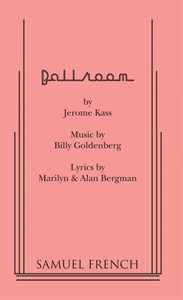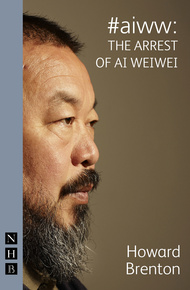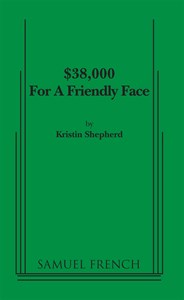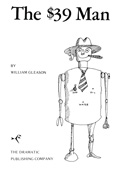
Ballroom
- Full Length Musical, Drama, Comedy, 1970s
- 14M, 17F
- ISBN: 9780573681400
The delightfully humane and moving Broadway production was developed by Tony Award-winning director Michael Bennett co-creator of A Chorus Line.
More information
Description
- Full Length Musical
- Drama, Comedy
- 120 minutes
- Time Period: 1970s
- Target Audience: Senior, Adult
- Set Requirements: Unit Set/Multiple Settings
- Cautions: No Special Cautions
- Orchestra Size: Medium
- Performance Group:
- Community Theatre, Professional Theatre
- Accolades:
- Winner! Tony Award for Best Choreography (1979)
Nominee! Eight Tony Awards including Best Musical and Best Book (1979)
Winner! Drama Desk Award for Best Choreography (1979)
Nominee! Seven Drama Desk Awards including Outstanding Book (1979)
In the Bronx in 1979, housewife Bea Asher has been widowed for a year. While her family has virtually enshrined her late husband, Bea won't accept "widow" as her lifelong designation. She has opened a thrift shop, which amounts to an ongoing garage sale of her own belongings. When her friend Angie urges her to get out of the shop and start living again, Bea agrees to visit a local dance hall, the Stardust Ballroom. Outside the hall that night, Bea summons her courage and goes in. The Stardust represents the American ballroom-dancing tradition that thrived in an earlier era; time seems to have flattened out. There are no young people here to carry on the tradition, but the Stardust regulars keep the flame burning.
On the Stardust floor, a foxtrot is in progress featuring the house band and singers. One spectacular dance succeeds another as Bea is drawn into the excitement. She meets Al Rossi, a mailman ("I'm in the government"). Like the other regulars, Al shakes off the tedium and the fear of daily life by dancing, and he spins Bea through cha-cha, merengue, waltz and, finally, a foxtrot. Bea hasn't felt this way in years. Al asks to drive her home, but Bea demurs; she goes home happy, however, and proud.
Helen, sister of Bea's late husband, waits for her to return home, thinking something terrible has happened. When she discovers that Bea has been out enjoying herself, she becomes outraged at the insult to her brother's memory. A moment after Helen furiously departs, Al phones Bea to say what a fine time he had and how much he hopes to see her again. Bea asks Al to phone again — but at the shop, not at home.
A month later, the ballroom regulars are in the middle of the Tango. Tonight, Bea lets Al take her home and invites him in for coffee. Haltingly, Al tries to tell her how he feels about her, and Bea has what she feared she would never have again: the feeling of being loved. But the next day, her family again intrudes. At the junk shop, Bea realizes her plans to go back to the Stardust that evening conflict with an earlier promise to babysit for her daughter, Diane. Bea tries to get her sister-in-law to help, with no luck, then offers to pay for a sitter. When Diane tries to insist, Bea makes it clear that she has begun a new chapter in her life and that the ballroom will take priority.
That night, Al again waits for Bea at the Stardust. When she appears, she is no longer gray-haired and simply dressed, but has dyed her hair red and wears a beautiful gown. The transformation is Bea's brightest moment, and Al takes her around the floor in celebration. Al and Bea return to her home, obviously very much in love, and it appears Bea's fairy tale has reached its happy conclusion, but Al can no longer keep back the truth: he is married, and while he and his wife do not love each other, he will never end the union. This is all of Al that Bea will ever have, and the scene ends as she tries to come to terms with that.
The next week at the Stardust, the regulars learn the "new" dance craze, the hustle; tonight, also, the dancers will nominate candidates for a new Queen of the Stardust Ballroom. Angie nominates Bea, but Bea is distracted because Al isn't there. Finally, as everyone departs, Al arrives, all apologies, but even though Bea thinks she has accepted that this is how things must be, she feels afraid and vulnerable. She runs off, with Al watching her go. She returns home to find her family waiting for her: her sister-in-law has summoned Bea's son, David, from California to help them talk Bea out of her new way of life. Everyone except David attacks her, but Bea remains unshaken in her resolve: "Have you ever been in this house alone? Have you ever been everywhere alone?" Finally, Bea throws them all out. Left alone again, Bea confronts her situation and accepts her relationship with Al for what it is.
The ballroom holds the biggest night of the year. All the regulars wear tuxedos and gowns. When a drum roll signals the moment for naming the new Queen, Bea is chosen and pours out her heart to her new friends. She will probably never have Al to herself, but she has found a life. Al leads Bea through one more dance, joined by the entire company, as the curtain falls.
REVIEWS:
"It brings class of Broadway."
New York Post
"Flows with grace and glows with affect."
Christian Science Monitor
"Ballroom is a major achievement in widening out understanding of the potential of musical theatre."
Women's Wear Daily
Premiere Production:
Ballroom opened on Broadway at the Majestic Theatre on December 14, 1978, starring Dorothy Loudon and Vincent Gardenia. The production was directed by Michael Bennett and choreographed by Bennett and Bob Avian.
Characters
- Casting: 14M, 17F
- Casting Attributes: Strong Role for Leading Woman (Star Vehicle)
BEA ASHER
HELEN - her sister-in-law
JACK - her brother-in-law
DIANE - her daughter
DAVID - her son
ALFRED ROSSI
MARLENE - nightclub singer
NATHAN BRICKER - nightclub singer
ANGIE - Bea's best friend
JOHNNY "LIGHTFEET"
MARTHA
PETEY
SHIRLEY
PAUL
"SCOOTER"
ELEANOR
PAULINE KRIM
FAYE
HARRY "THE NOODLE"
MARIE
EMILY
MARIO
ANITRA
CARL
MARGARET
THOMAS
BILL
NATALIE
ESTELLE
KATHY




